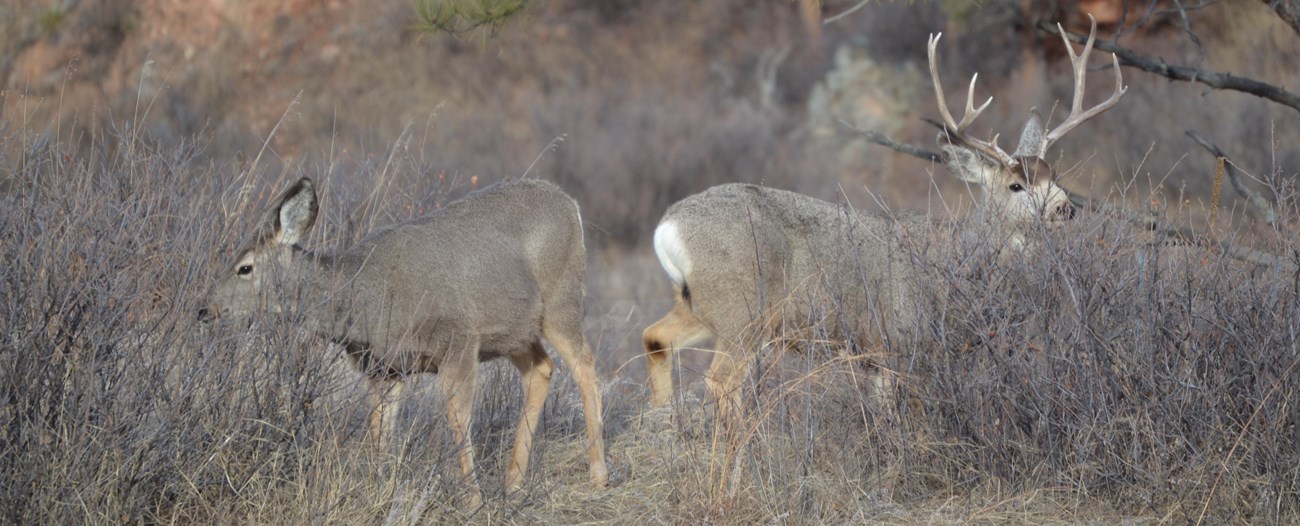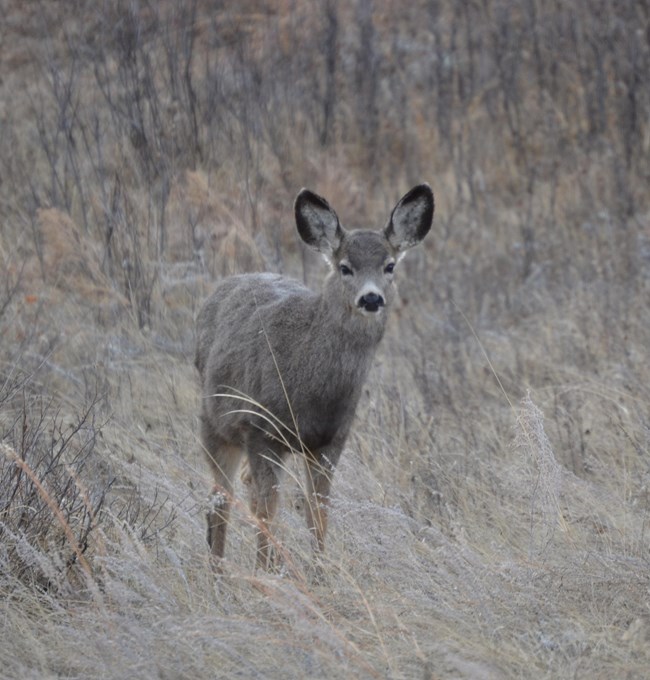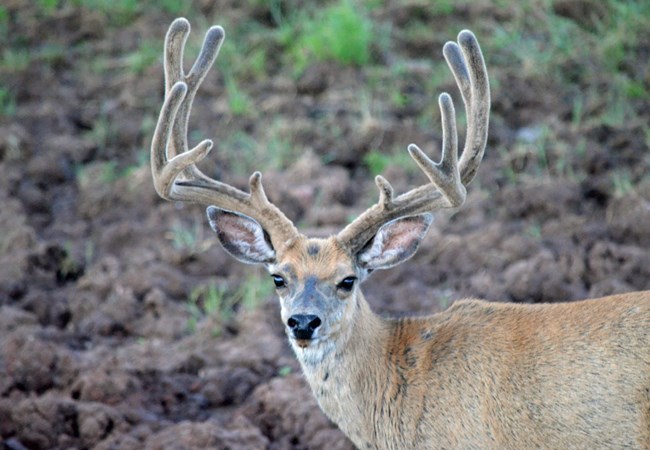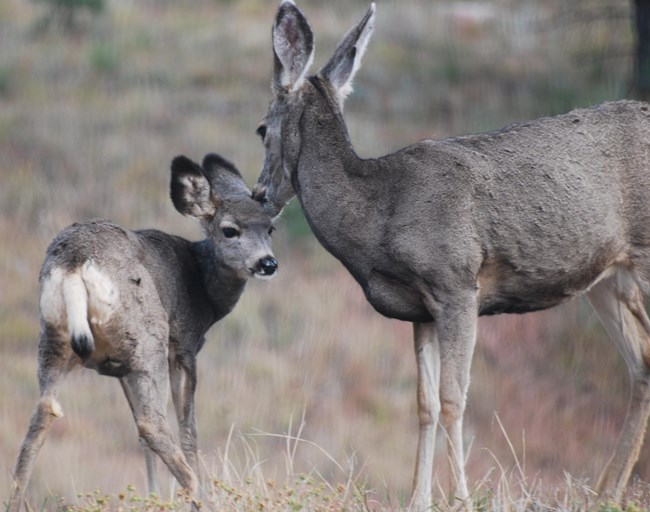
NPS photo by Callie Tominsky 
NPS Photo by Callie Tominsky Wind Cave National Park is a mosaic of forested area and prairie. Small mammals like the red squirrel, porcupine, and chipmunk are often seen in forested areas, along with larger mammals like the mule deer and the elk. The mule deer, while closely related to white-tailed deer, are remarkably distinct in their biological, ecological, and behavioral attributes. The mule deer evolved in the dry, rugged badlands and mountains of the west. They have a distinctly different gait from the leisurely, graceful leaps of the white-tail. When startled, a mule deer will move in a series of stiff-legged jumps with all four feet hitting the ground together. This gait offers two advantages: it allows the deer to out-distance predators in rough terrain, and to see above the thick brush. If necessary, they can turn or completely reverse direction in the course of a single bound. Other characteristics that distinguish mule deer are the large size of their ears (for which they were named), their overall shape and large size, the form of the antlers and the tail. The mule deer carries its thin, black-tipped tail drooped, unlike the uplifted, bushy white tail of its cousin. 
NPS Photo Antler growth begins in the spring. Antlers are a true bone, covered with "velvet," a soft, skin-like tissue that carries nourishment and calcium for the rapidly growing antlers. Full growth is attained in late summer with the tines forking into a series of Y's and rising above the head. After the antler growth is completed, the blood-supplying velvet is no longer needed and begins to fall or get rubbed off. This leaves the antlers shiny and hard. Late each winter the antlers fall off, and with spring, the growth cycle begins again. Cast off antlers play a significant role in maintaining a natural balance in the park. They provide an important source of calcium and other minerals to wildlife such as mice, porcupines, coyotes, bison, elk, and deer, all of which chew on the tips and softer portions throughout the year. Such a supplemental mineral source may be especially important during the birthing seasons of these mammals. 
NPS Photo Mule deer breed in late November and early December. A buck will find a suitable doe and they will often play chase games at breakneck speeds before mating. They will remain together for several days. Fawns are born in late May or early June. A doe will usually produce a single fawn the first year she gives birth and then produce twins in following years. They young are able to walk within a few minutes after being born. The have white camouflage spots and are further protected by having little or no scent. Fawns usually stay with the doe for the first full year. During the summer, the deer feed on tender branch and leaf tips of trees, shrubs, and some grasses. They are nocturnal feeders and are most often seen in the early morning and late evening. Mule deer are found in the West from Canada to Mexico and in a variety of habitats from the high mountains to the plains and deserts. In the park, they are most often sighted in the Headquarters area where good browse is available. |
Last updated: August 26, 2019
